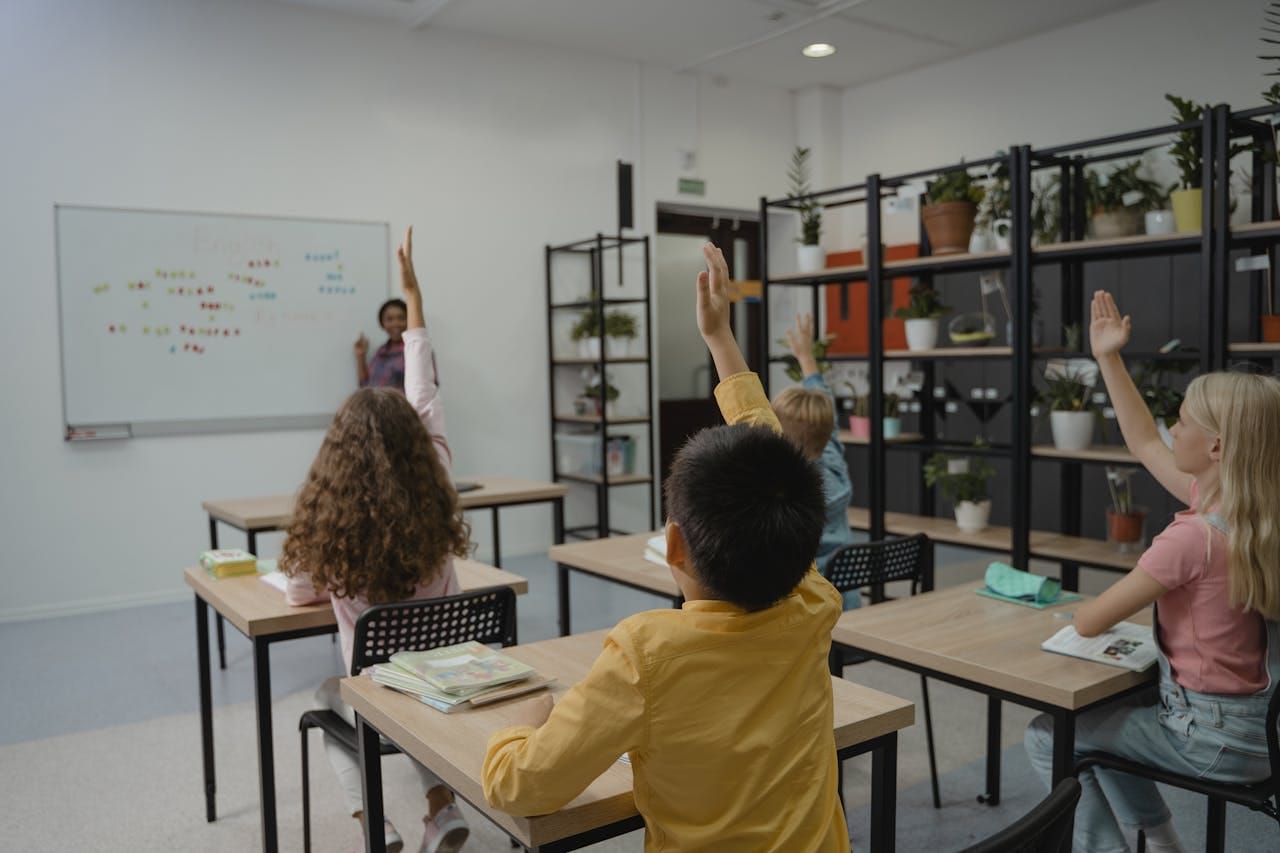Classroom Participation and Interaction: Impact on Student Confidence and Personality Development
We’ve all been there—sitting quietly in class, hoping the teacher doesn’t call on us. The fear of saying the wrong thing, or just being too shy to speak up, can make classroom participation feel intimidating

We’ve all been there—sitting quietly in class, hoping the teacher doesn’t call on us. The fear of saying the wrong thing or being too shy to speak up can make classroom participation feel intimidating. Remember that one class where everyone was engaged, bouncing ideas off each other, and you felt like you learned something? This isn’t just a dream scenario for educators; it’s what every parent and school hopes for.
💡 Lessons learnt: Confidence comes not from always being right, but from not fearing to be wrong.
One of the most immediate and visible benefits of participation is the boost in student confidence. When a student raises their hand and speaks up, they are stepping into the spotlight—an act that requires courage. Each time they do this successfully, their self-confidence gets a small but significant boost. This confidence doesn’t appear overnight, and it certainly doesn’t develop in isolation.
As students voice opinions, ask questions, or challenge ideas, they engage in higher-order thinking. Vygotsky’s Theory of Social Development argues that social interaction plays an important role in cognitive development. In discussions, they learn to articulate their thoughts, evaluate different perspectives, and refine their ideas through dialogue. Over time, this sharpens their academic abilities and also enhances their communication skills.
From Timid to Talkative: How Personality Evolves in the Classroom
Every classroom is full of different personalities—some students are naturally vocal, while others sit quietly, hoping to blend in. For educators, it’s easy to notice the loud, confident students who always have their hands up. But what about the quieter ones? How can we ensure they’re developing just as much, both academically and personally? The answer lies in creating an environment that encourages participation.
The Introverted Student
Shy students or those who naturally lean toward introversion often avoid participating in class for fear of making mistakes or drawing attention to themselves. But here’s something fascinating: these students stand to benefit the most from participation, even though it’s often the hardest for them. The classroom provides a unique, structured environment where these students can practice social skills, push their boundaries, and develop a more assertive side of their personality in a controlled, supportive setting.
Encouraging introverted students to participate in classroom discussions can significantly improve their self-assurance and engagement over time. Studies show that structured, low-risk opportunities for participation and supportive teaching strategies help introverted learners feel more comfortable, leading to increased involvement in discussions and group activities (Webster, 2018), (Rezaei, 2022).
For educators, this means finding ways to support these quieter students without forcing them into uncomfortable situations too quickly. Strategies like small group discussions, paired activities, or even digital platforms that allow for written responses can provide safe starting points. Over time, these students often gain the confidence to participate in larger, whole-class discussions.
Changing How Students View Participation
A major roadblock to participation for many students, especially those who are naturally quieter, is something called "cognitive appraisal." In simple terms, this is how students interpret and respond to a given situation—particularly stressful ones, like answering a question in front of the whole class.
For some students, speaking up in class feels like a high-stakes performance. They view it as a threat: “What if I get the answer wrong? What if everyone laughs?” This negative cognitive appraisal can trigger anxiety, causing students to retreat further into themselves, and reinforcing their reluctance to participate. This is where your skill as an educator or caregiver comes in, teachers can help students reframe how they see participation, turning it from a threat into an opportunity.
When students start seeing classroom participation as a low-risk opportunity to learn and grow, their mindset begins to shift. Instead of focusing on the fear of making mistakes, they start emphasizing the value of what they can learn, even from errors. Research shows that students’ perceptions of academic challenges, combined with supportive teaching practices, are positively linked to increased engagement and participation in the classroom (Strati et al., 2017). Furthermore, creating a supportive environment where students feel empowered to embrace challenges can lead to significant improvements in their classroom participation and overall learning experience (Shernoff et al., 2017).
Learning from Classmates
Studies have shown that the behavior of peers is one of the strongest predictors of classroom engagement. A study by Linnenbrink-Garcia and Pekrun (2017) found that students are 40% more likely to participate when they observe their peers frequently engaging in discussions and asking questions. This peer effect means that creating a culture of participation can gradually bring even the most reserved students into the fold.
Teachers can leverage this dynamic by pairing more outspoken students with quieter ones in group activities, ensuring that such grouping/pairing is set up in a way that gives every student a chance to voice their thoughts in smaller, more comfortable settings. Over time, as these quieter students see their peers embracing participation, they’re likely to follow suit, gaining confidence with each new interaction.

Adiutor
Adiutor means "helper" - we do just that, by taking a load of your school administration and helping you focus on what matters most: the kids.
References
- Boekaerts, M., & Corno, L. (2019). Self-regulation in the classroom: A perspective on assessment and intervention. Educational Psychologist, 42(2), 87-98.
- Carini, R. M., Kuh, G. D., & Klein, S. P. (2020). Student engagement and student learning: Testing the linkages. Research in Higher Education, 47(1), 1-32.
- Collaborative for Academic, Social, and Emotional Learning (CASEL). (2020). The impact of SEL on student engagement and outcomes.
- Dweck, C. S., Walton, G. M., & Cohen, G. L. (2018). Academic tenacity: Mindsets and skills that promote long-term learning. Journal of Educational Psychology, 105(2), 99-112.
- Fassinger, P. A. (2019). Understanding classroom interaction: Students' and professors' contributions to students' silence. Journal of Higher Education, 66(1), 82-96.
- Finn, J. D., & Zimmer, K. S. (2020). Student engagement: What is it? Why does it matter? Teachers College Record, 105(6), 101-123.
- Linnenbrink-Garcia, L., & Pekrun, R. (2017). Students’ emotions and academic engagement: Introduction to the special issue. Learning and Instruction, 50, 1-6.
- Rezaei, A. (2022). Comparing strategies for active participation of students in group discussions. Active Learning in Higher Education.
- Walker, A. (2007). Group work in higher education: Are introverted students disadvantaged? Psychology Learning & Teaching, 6(1), 20–25.
- Webster, M. (2018). Integrating introverted learners. New Directions in Teaching and Learning English Discussion, 6, 75–78.
- Pekrun, R., Goetz, T., Titz, W., & Perry, R. P. (2019). Academic emotions in students’ self-regulated learning and achievement: A program of qualitative and quantitative research. Educational Psychologist, 37(2), 91-105.
- Shernoff, D., Ruzek, E., & Sinha, S. (2017). The influence of the high school classroom environment on learning as mediated by student engagement. School Psychology International, 38(2), 201–218
- Strati, A. D., Schmidt, J. A., & Maier, K. S. (2017). Perceived challenge, teacher support, and teacher obstruction as predictors of student engagement. Journal of Educational Psychology, 109(1), 131–147
- Smith, T., Jones, A., & Roberts, C. (2021). The impact of classroom participation on student self-confidence: A longitudinal study. Journal of Educational Research, 114(4), 345-360.
